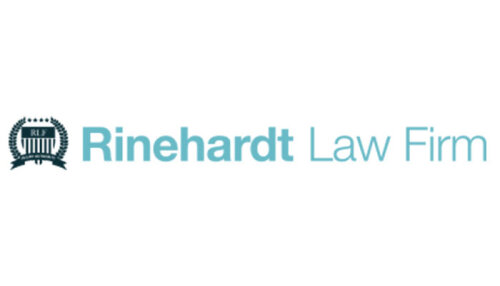Best Accidents & Injuries Lawyers in Ontario
Share your needs with us, get contacted by law firms.
Free. Takes 2 min.
List of the best lawyers in Ontario, United States
United States Accidents & Injuries Legal Articles
Browse our 1 legal article about Accidents & Injuries in United States written by expert lawyers.
- What to Do After a Serious Car Accident in the US: A Legal Step-by-Step Guide
- Call 911, get medical help, and do not admit fault. Photograph the scene, vehicles, and your injuries, and get witness names and the officer's report number. Report the crash to your insurer quickly. In no-fault states, PIP deadlines are short (e.g., Florida requires initial treatment within 14 days; New York... Read more →
1. About Accidents & Injuries Law in Ontario, United States
Note: Ontario is a province in Canada, not part of the United States. This guide focuses on Ontario law and the practical steps residents take after an accident or injury in that jurisdiction. Personal injury matters in Ontario typically involve both tort claims and insurance benefits.
In Ontario, you may access two parallel avenues after an injury: statutory accident benefits provided by auto insurers and traditional tort claims for damages caused by another party. Auto insurers pay benefits under the Statutory Accident Benefits Schedule (SABS) to cover medical care, rehabilitation, wage loss, and other supports, regardless of fault in many cases. At the same time, you can pursue a tort claim for pain and suffering or other damages against the at-fault party, under Ontario civil law.
Legal matters in this area rely on a mix of statutes, regulations, and case law. Key players include the Insurance Act, the Limitations Act, and the Highway Traffic Act, among others. Licensed professionals in Ontario use titles such as solicitor and lawyer, with the Law Society of Ontario regulating the profession.
Two important sources of authority for Ontario accident and injury law are the provincial statute books and the court system. For current rules, you should consult official Ontario resources and, when needed, a qualified Ontario personal injury lawyer or solicitor.
Ontario operates a no-fault auto insurance regime for accident benefits, administered under the Insurance Act and its Schedule known as SABS.
Key sources for further reading and official details include FSRA Ontario, Ontario Laws, and CanLII for statutes and decisions.
Key sources you can consult now:
- FSRA Ontario - regulator for auto insurance and consumer protections.
- Ontario Laws - official statutes and regulations, including the Insurance Act and Limitations Act.
- CanLII - free access to Canadian statutes and court decisions, including Ontario cases.
2. Why You May Need a Lawyer
When injuries occur in Ontario, specific scenarios often require legal counsel to protect your rights and maximize compensation. Below are real-world situations that commonly involve accident and injury lawyers.
- A motor vehicle crash leaves you with long-term medical needs and disputed fault. An Ontario solicitor can help navigate SABS benefits and a tort claim at the same time.
- You slip and fall on a grocery store or apartment complex and the owner contests liability or your damages. A trial lawyer can assess occupier responsibilities under the Occupiers’ Liability Act.
- A collision involving a commercial vehicle or trucking company raises complicated fault and insurance issues. Legal counsel can coordinate with insurer investigations and preserve evidence.
- Medical malpractice worsens injuries you sustained in a hospital or clinic. A personal injury solicitor can pursue a medical malpractice claim and coordinate care with experts.
- You suffer long-term injuries from a construction site incident. A construction accident lawyer can evaluate workplace safety obligations and pursue compensation.
- A product manufacturer’s defect contributed to your injury. A product liability claim may be necessary to recover damages beyond basic benefits.
In these scenarios, a lawyer can help with: documenting injuries, communicating with insurers, meeting court deadlines, assessing settlement offers, and pursuing trial if needed. An Ontario solicitor or trial lawyer can explain the difference between no-fault benefits and tort claims and advise on the best path for your case based on the facts.
3. Local Laws Overview
This section highlights 2-3 key laws or regulations that govern Accidents & Injuries in Ontario. It includes the name of the law, its scope, and any notable timeline notes.
- Insurance Act, R.S.O. 1990, c. I.8 - Establishes the framework for auto insurance in Ontario, including the Statutory Accident Benefits Schedule (SABS) and the no-fault regime for many injury-related benefits. The Act governs how insurers must handle claims and benefits after vehicle accidents.
- Statutory Accident Benefits Schedule (SABS) - A schedule under the Insurance Act that sets out the mandatory benefits available to insured drivers, passengers, and pedestrians after an auto collision. SABS covers medical and rehabilitation benefits, income replacement, non-earner benefits, and other supports, with benefits payable regardless of fault for eligible claims.
- Limitations Act, 2002, S.O. 2002, c. 24, Sched. B - Determines how long you have to start a personal injury action. In most cases, a claim must be filed within two years of discovering the injury, with certain discovery and interruption rules applying.
Other relevant statutes often involved in accident and injury matters include the Highway Traffic Act (traffic incidents and related duties) and the Occupiers’ Liability Act (premises liability). For current text and recent amendments, consult official Ontario sources.
For current statutes and regulatory guidance, consult Ontario Laws and related updates on the official Ontario site.
Notes on changes and trends: Ontario routinely updates auto insurance regulations through FSRA guidance and amendments to the Insurance Act and SABS. Always check the latest FSRA updates and the Ontario Laws site for the most current rules and deadlines.
4. Frequently Asked Questions
What is the difference between SABS benefits and a tort claim?
SABS provides no-fault auto accident benefits like medical care and wage replacement. A tort claim seeks compensation for pain and suffering and other damages from the at-fault party.
How do I start a personal injury claim in Ontario?
Begin by documenting injuries, obtaining medical records, and contacting an Ontario personal injury lawyer. The process often starts with a formal letter of claim and may involve settlement discussions or litigation.
When should I contact a lawyer after a car crash?
Consult a solicitor as soon as possible after stabilization. Early legal advice helps preserve evidence and preserve the right to pursue both SABS and a tort claim.
Where can I file a slip and fall claim in Ontario?
For premises liability, you generally pursue the claim in the Ontario civil courts, typically starting in a higher court if damages are substantial or a small claims path if applicable.
Why do I need a lawyer for a motor vehicle accident?
A lawyer helps maximize benefits, ensure timely submissions, determine fault, assess settlement offers, and preserve your right to sue for non-economic damages if warranted.
Can I sue for pain and suffering under Ontario auto insurance?
Pain and suffering damages are typically pursued through a tort claim against the at-fault party, subject to limits and evidence. SABS covers many other benefits regardless of fault.
Should I accept a settlement offer from the insurer?
Do not rush to settle without lawyer input. Insurers may offer early settlements that do not cover long-term care or persistent injuries.
Do I need a doctor to prove injury for a claim?
Medical evidence is essential. Keep all medical records, assessments, and treatment notes to support both SABS benefits and tort claims.
Is there a time limit to file a claim?
Yes. The Limitations Act generally requires filing within two years of discovery of the injury, with some exceptions and rules that can affect discovery.
How much does a personal injury lawyer in Ontario charge?
Many Ontario personal injury lawyers work on contingency, meaning you pay attorney fees only if you win or settle your claim. Clarify fees during the initial consultation.
What is the difference between a solicitor and a trial lawyer in Ontario?
In Ontario, the terms are often used interchangeably. A solicitor handles legal advice and documentation, while a trial lawyer represents clients in court. Many practitioners do both.
What's the difference between small claims court and Superior Court for injuries?
Small Claims Court handles simpler, lower-value disputes (often up to a $35,000 limit). More complex cases or higher damages typically proceed in the Ontario Superior Court of Justice.
5. Additional Resources
These organizations provide official information, regulatory guidance, or access to statutes and case law relevant to Accidents & Injuries in Ontario.
- FSRA Ontario - Financial Services Regulatory Authority of Ontario. Function: regulates auto insurance markets in Ontario and oversees consumer protections and industry practices. https://www.fsrao.ca/
- Ontario Laws - Official repository of statutes and regulations, including the Insurance Act and Limitations Act. Function: provides up-to-date statutory text. https://www.ontario.ca/laws
- CanLII - Canadian Legal Information Institute. Function: free access to Canadian statutes, regulations, and court decisions for research and reference. https://www.canlii.org/
6. Next Steps
- Gather all documents related to the incident within 1-2 weeks. Collect medical records, police or incident reports, insurance correspondence, photos, and any witness statements.
- Identify injured persons and all damages. List medical costs, lost wages, future care needs, and non-economic impacts like pain and suffering.
- Find 2-3 Ontario personal injury solicitors to consult. Check practice focus, track record, and client reviews. Schedule initial consultations.
- Prepare for consultations. Bring accident details, treatment history, and likely questions about fees and timelines. Ask about contingency options and disbursements.
- Ask about fees and engagement terms. Confirm whether the lawyer works on a contingency basis and what advance costs you may incur.
- Choose a lawyer and sign a retainer. Discuss a plan with clear milestones, anticipated timelines, and how updates will be provided.
- Keep track of timelines and respond promptly. Expect settlement discussions within 3-12 months where possible, or longer for complex cases.
Lawzana helps you find the best lawyers and law firms in Ontario through a curated and pre-screened list of qualified legal professionals. Our platform offers rankings and detailed profiles of attorneys and law firms, allowing you to compare based on practice areas, including Accidents & Injuries, experience, and client feedback.
Each profile includes a description of the firm's areas of practice, client reviews, team members and partners, year of establishment, spoken languages, office locations, contact information, social media presence, and any published articles or resources. Most firms on our platform speak English and are experienced in both local and international legal matters.
Get a quote from top-rated law firms in Ontario, United States — quickly, securely, and without unnecessary hassle.
Disclaimer:
The information provided on this page is for general informational purposes only and does not constitute legal advice. While we strive to ensure the accuracy and relevance of the content, legal information may change over time, and interpretations of the law can vary. You should always consult with a qualified legal professional for advice specific to your situation.
We disclaim all liability for actions taken or not taken based on the content of this page. If you believe any information is incorrect or outdated, please contact us, and we will review and update it where appropriate.
Browse accidents & injuries law firms by service in Ontario, United States
Ontario, United States Attorneys in related practice areas.










